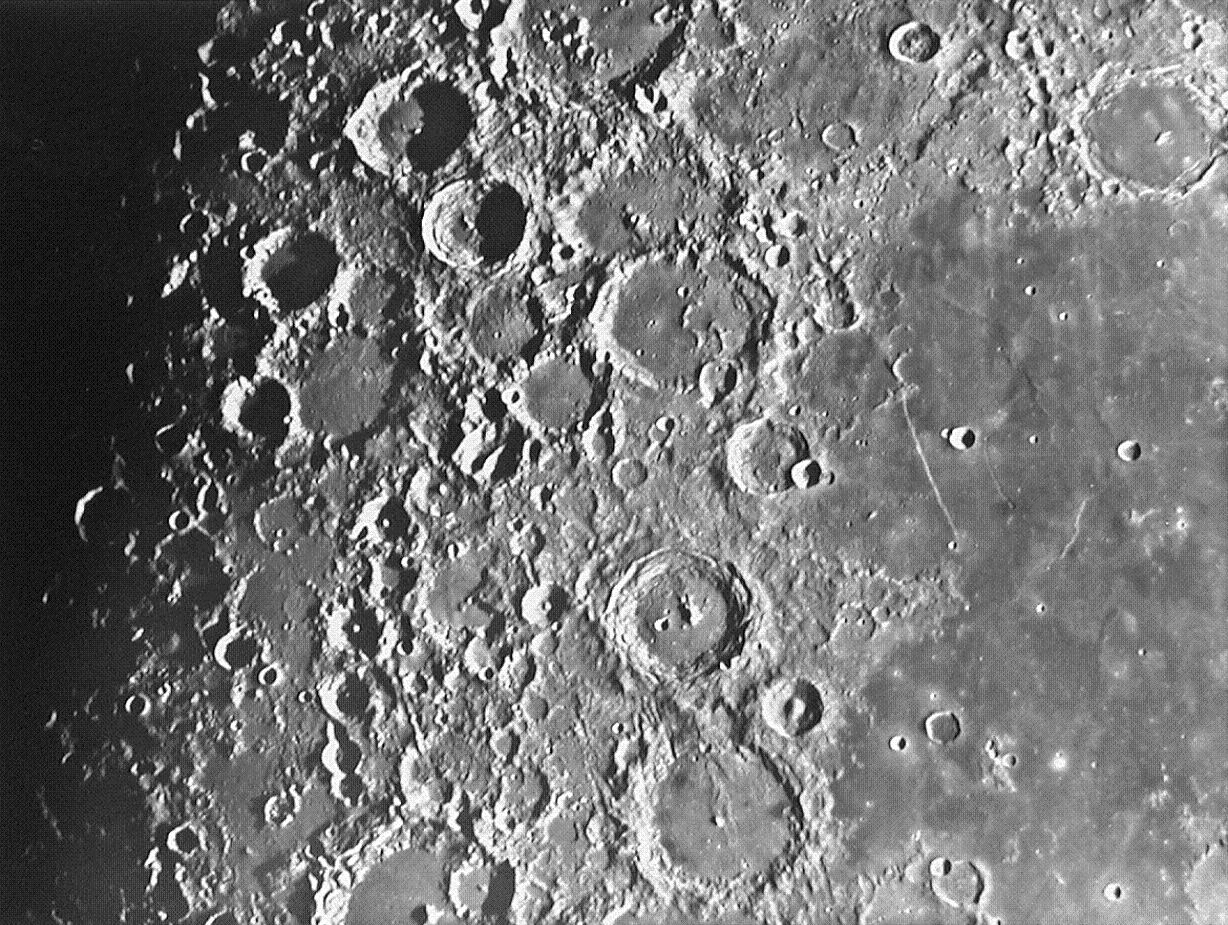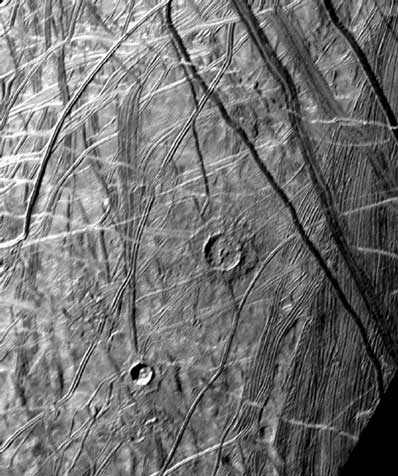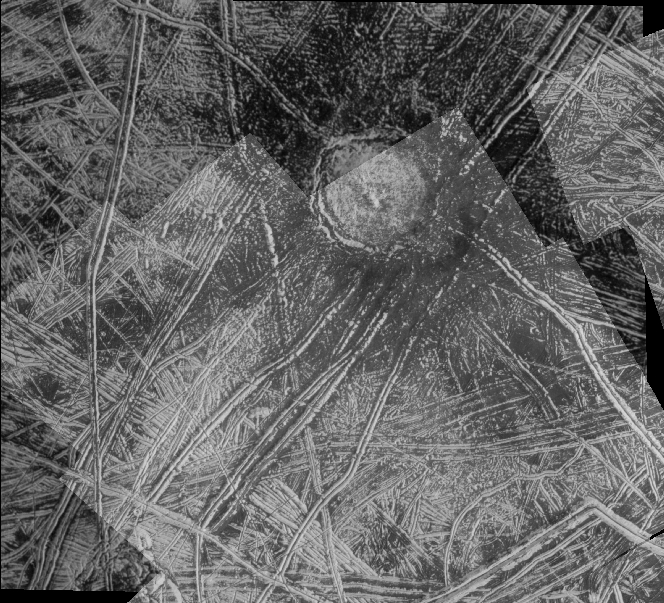
Geomorphic Features Of Europa
Craters

Figure 5. Craters on the Moon. Courtesy NASA/JPL.

Figure 6. Craters on Europa. Credit:Elizabeth Turtle Planetary Image Research Lab, Lunar and Planetary Lab, University of Arizona
Craters are formed from asteroids and comets impacting on a body. There are three main stages to crater formation: contact and compression stage, ejection (or excavation) stage, and collapse and modification stage. As an projectile impacts a body, both the projectile and the material beneath it are compressed, sending out shock waves through both, forming the shape of the crater and destroying the projectile. During compressed, material is ejected around the projectile (Figure 7). For smaller projectile, this ejected can be spread uniformly around the crater, but larger projectiles will cause rays of material to be ejected.
Craters can range in size, from microcraters that are sub-centimeter in diameter, to large complex craters that form multiring basins over 100 km across. Simple craters are small, up to a few kilometers in diameter. They are bowl shaped with a depth of ~1/5 its diameter and generally smooth. Complex craters are formed from larger projectiles and have diameters in the a few tens to hundreds of kilometers in diameter. They have flat-floor bottoms usually containing a central peak and terraced rims. For very larger craters, multiring basins form around the crater radiating outwards for several hundred kilometers. Very large projectiles can break the surface of a planet/satellite thus bringing up deeper material.

Figure 7. Formation of complex craters. Melosh 1989.
On Europa, simple and complex craters are present with the transition occurring around 5-6 km (Schenk 2002). Examples of simple craters include Dylan, Balor, and Cormac. Cilix is a complex crater, ~ 18km is diameter, and exhibits a central peak, flat floor, terraced walls, and reddish-brown continuous ejecta deposits (Figure 8). Pwyll is 24 km across and has bright rays extending to distances greater than 1000 km (Figure 9) (Moore et al. 1998). In addition, the base of the crater is filled with a darker material believed to originate from a subsurface liquid. One of the largest craters on Europa, Tyre (~44 km), also exhibits pooled, dark material in the base of the crater.

Figure 8. Cilix crater. Image produced by: Elizabeth Turtle Planetary Image Research Lab. (PIRL) , Lunar and Planetary Lab. (LPL), University of Arizona)

Figure 9. Pwyll crater. Image produced by: Elizabeth Turtle Planetary Image Research Lab. (PIRL) , Lunar and Planetary Lab. (LPL), University of Arizona)
By studying crater size and shape, estimates on the thickness of Europa's ice shell can be made. Moore et al. (2001), concluded that craters ~10-18 km in diameter (3-6 km deep) did not penetrate the surface of Europa down to a liquid layer. Therefore, the ice shell of Europa must be at least 6 km thick. However, the projectiles that created the Pwyll and Tyre craters may have excavated liquid water. From this information, Schenk (2002) estimates the base of the ice layer to be ~20 km thick.
Overview
Tidal Heating
Ridges
Bands
Chaos
Astrobiology
Bibliography